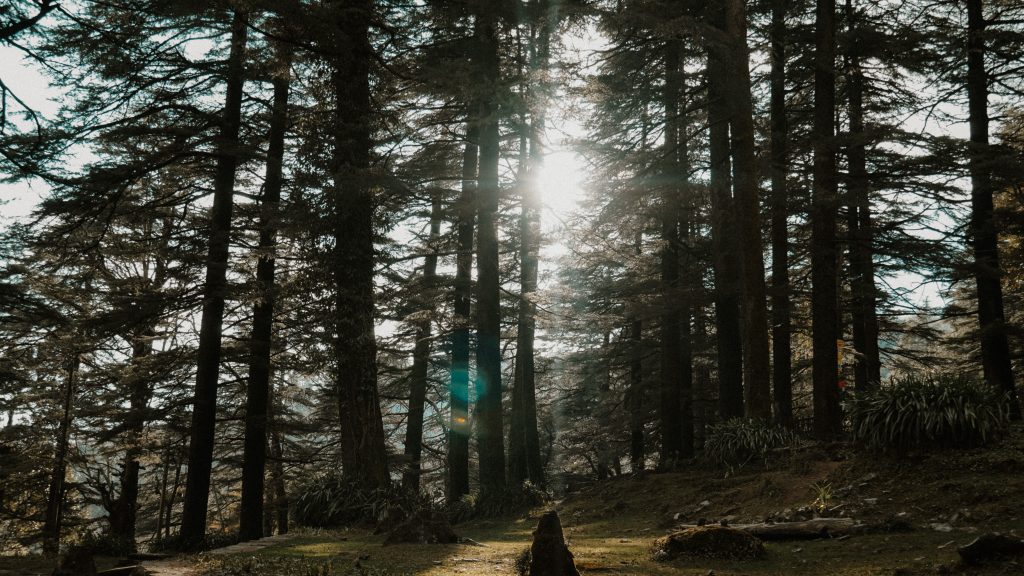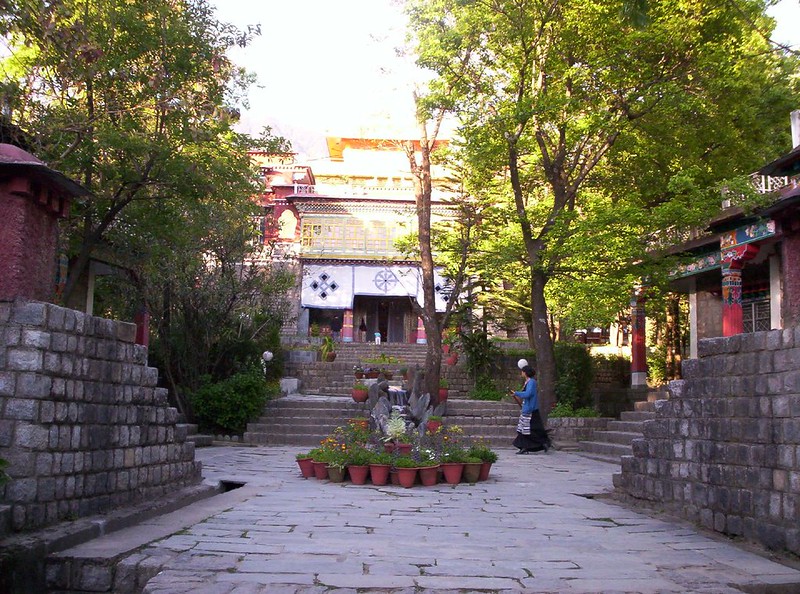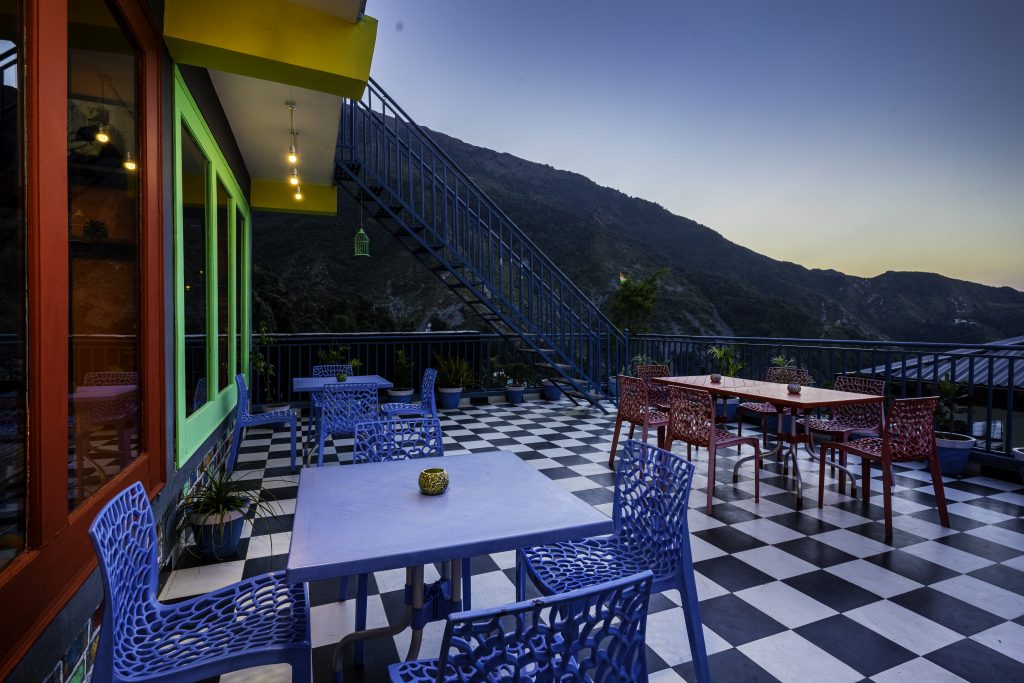The winds of change can be cruel, kicking up dust, moving geographical boundaries, and forcing migrations. But when the dust settles, we often find an interesting merge of cultures and traditions to explore. One such instance is observable in McLeodGanj. The Tibetan community that has lived here since the mid-1900’s have led to it being known as the ‘Mini-Tibet of India’. Rife with Tibetan culture, traditions, and of course, food, McLeodGanj is practically a microcosm of Tibet. Intrigued? Read on for our exploration of this culture in McLeodGanj, and our top 6 places to experience mini-Tibet.

Tracing The Roots
In 1959, the people of Tibet led an uprising against the People’s Republic of China that was in control of their country. In the wake of the revolt and violence, the 14th Dalai Lama fled Tibet, crossing the border and seeking safety in India. Over the years that followed, several hundreds of Tibetans followed their leader into the safety of the Himalayas.
The Tibetan community has since then settled down in Himachal Pradesh, imbibing the region with their culture and traditions. McLeodGanj is the seat of that settlement, where the Central Tibetan Administration or the Tibetan-government-in-exile is headquartered. The heavy presence of Buddhism and Tibetan culture have led to it being a mini-Tibet, and it’s well worth exploring.
The Tsuglagkhang Complex
The Tsuglagkhang Complex is a monastic village in McLeodGanj that is also home to the Dalai Lama. He resides, of course, behind a well guarded gateway, but make no mistake – unlike Bollywood stars’ homes that lie empty most of the time, the Dalai Lama is very much present here. Alongside the Dalai Lama’s residence are the Tsuglagkhang Temple, the Namgyal Monastery, and the Tibetan Museum.
Exploring the entire complex can take as much as half a day. Architecturally, it doesn’t boast of much, and is far from the extravagance of some of the monasteries found in Leh. But as you head deeper into the complex, the serene atmosphere and the devotion of the monks towards Buddhism become more and more apparent.

Make sure you stop at the Kalachakra or the ‘Wheel of Life’, sure to capture you with its many statues and mandalas. Peep into the main temple room for a glimpse of the throne upon which the Dalai Lama sits to spread his teachings. Lastly, admire the many statues within the temple, particularly the towering 3-meter tall statue of ‘Sakyamuni Buddha’. On either side of the statue are statues of ‘Padmasambhava’, an Indian scholar who introduced Buddhism to Tibet, and ‘Avalokitesvara’, the deity that the Buddhishts believe is equalled on Earth by the Dalai Lama.
But hold your horses and don’t get excited about how ‘lit’ your Instagram Stories will be; photography isn’t allowed in the complex. After all, if you want to truly experience mini-Tibet, you have to play by the rules. However, time your visit right and you’re in for a treat. At 1.30 pm from Mondays to Saturdays, monks converge to debate and discuss matters in the central courtyard. Plus, make your enquiries and book your visit at least 2 days in advance to be present for one of the hearings of the Dalai Lama.
Kora Circuit
One of the essential ways to experience mini-Tibet is by understanding the struggle in its history. After all, the Tibetans fled to India for their lives and their safety, and many lives were lost. The Tibetan’s struggle for freedom continues even today. Commemorating this struggle alongside devotion towards Buddhism is the Kora Circuit. The circuit is a 30-minute route around the Tsuglagkhang Complex, meant to be followed in a clockwise direction.
As you come across the kora circuit, you’ll be met with the stunning sight of thousands of prayer flags marking its path, fluttering in the constant breeze. Walking along the path, you come across an array of prayer wheels and Buddhust shrines. Right across are photos of over 130 Tibetans who have self-immolated since 2009 to protest the Chinese rule.

Tibetan pilgrims make this clockwise ‘kora’ out of veneration, but there’s no restriction on visitors walking along the circuit. The air will be filled with the chirping of birds, the fluttering of the flags and the soft murmur of prayers. Make sure you remember your place, and instead of hurriedly rushing past pilgrims in prayer, meet their pace and admire the tranquility around you.
Tibetan Institute of Performing Arts
Practically every culture across the world has a rich component of art, music and dance, and witnessing these is often a memorable experience. One such place to witness culture in motion is the Tibetan Institute of Performing Arts (TIPA). Witnessing Tibetan dance and music isn’t just entertaining, but is also a glimpse into something very integral to every Tibetan. Knowledge of Tibetan culture is traditionally classified into five ‘Fields of Knowledge’, and dance and music make up one of these five key components.
The Institute often has musical, dance and theatrical performances, as well as operatic performances! Make sure you try to catch Lhamo, the local folk opera, by inquiring ahead. But if a small performance doesn’t cut it for you, head here in the month of August. This is when TIPA puts on the grand Shoton Festival, attracting both locals and tourists alike.

This annual festival marks the end of the monks’ meditation season and is celebrated for a week. Apart from the spectacular performances, you can also observe horse races, yak races, and religious ceremonies. TIPA also organizes an annual folk opera festival in the months of March or April. The festival sees up to 11 different operatic troops performing, each better than the last. If you’re the type to seek out immersive experiences, these will check every box on your list.
The Norbulingka Institute
Due to the amount of upheaval in their history, the Dalai Lama and other Tibetans are concerned with the preservation of their cultural heritage. The Norbulingka Institute is a physical manifestation of this preservation, and dates back to the 1980’s. It was inaugurated by the Dalai Lama in 1995, and in fact, traces its name back to the Summer Palace of the Dalai Lama in Tibet.
The interesting part about the Institute is that while its main aim is to preserve Tibetan literature, art and music, it does so through self-sustaining means. A group of talented, skilled masters train artists in the ancestral skill and knowledge of Tibetan handicraft and culture. This not only preserves a withering culture, but also employs over 300 Tibetans in McLeodGanj! In other words, you can shop around for some authentic Tibetan handicrafts, all while knowing your money goes towards a good cause.

So if you’re ever in the mood to be charitable in McLeodganj, heading to the Institute will be a swell idea. You can purchase intricately-made Thangkas, shawls and pouches to take back for family, and best of all, a range of home furnishings, from pillows to wall hangings! Experience mini-Tibet may be something on your bucket list, but there’s nothing like taking back a bit of it for your room.
Shopaholics, we know this sounds like music to your ears, but make sure you take in the beauty around you. In fact, beauty would be an understatement. Wooden pathways fold over into stairs, making their way across serene ponds surrounded by lush greenery. These lead up to the entrance of the Institute, where the atmosphere is thick with a fascination and devotion to the arts.
Local Markets
Continuing on the high note of shopping as a way to experience mini-Tibet, head to the local markets to snag some great deals. McLeodGanj’s Central Square is where to don your haggling avatar since you can find some gorgeous things here. These include Thangka tapestry paintings, a number of handicrafts, and wooden carvings.
The Tibetan Mini Market has a store of knick-knacks and souvenirs of the smaller kind. These work just fine to take back for all your friends on that ‘Close Friends’ viewing list on Insta, replying about their FOMO seeing you in McLeodGanj. Finally, for souvenirs that level-up to being fit for family, head to Kotwali Bazaar. These winding streets have plenty of well-made carpets and rugs, perfect to adorn your house.

Food Street
We like to save the best for last, and as much as Tibetan culture will capture your hearts, we know that food is where you really go gaga. Indeed, there’s no denying that sampling (read ‘gorging on’) the local cuisine is a must to experience mini-Tibet. And indeed, you can’t mention Tibetan cuisine without talking about momos! These steamed dumplings are practically everywhere to be found in McLeodGanj, from potato and non-veg to chocolate variations. In terms of establishments, The Clay Oven and Lobsang’s Four Season Café are two places that found their claim to fame with their delicious momos.
Few things beat the smell of freshly baked Tibetan bread at Peace Café. Dig into the bread while sipping on some hot butter tea, and you’ll know just why this café gets this name. Norling is a small restaurant, but as is with most small local restaurants, they have the most delicious food. Head here for steaming hot thukpa and momos among other local food. Finally, The Tibet Kitchen is a must for those true-blue foodies. They serve all things Tibetan, including the spicy Bhutanese ‘kewa datse’ and ‘shapta’ stew with mutton and veggies.
Conclusion
These 6 places to experience mini-Tibet should definitely be on your McLeodGanj bucket list. And honestly, there’s nothing like a lively place to stay, and lively people to share it with. It’s these things that make your trip go from good to great.

If you’re keen on something lively, make sure you check out goSTOPS McLeodGanj. Not only are we affordable, we’re also fun, and perfectly located as well!
FAQs
Which Is Also Known As Mini Tibet?
McLeodGanj has gained the nickname of ‘mini-Tibet’. This is because the presence of Tibetans in the region has imbibed it with their cultures and traditions. Additionally, the headquarters of the Tibetan-government-in-exile are in McLeodGanj.
Which Place Of India Is Known As Small Tibet?
Once again, Small Tibet would be McLeodGanj. Interestingly, there are a few other locations in India that are also considered to be ‘small Tibets’, where Tibetan settlements are located. These are Leh, and Bylakuppe in Mysore.
Is Dalai Lama In Mcleodganj?
Yes, the Dalai Lama resides in the Tsuglagkhang Complex in McLeodGanj. He has been living here since the 1960s when he and his entourage fled Tibet in the wake of an uprising against the Chinese.
How Did Mcleod Ganj Get Its Name?
Mcleodganj was discovered in the 1850s by David Mcleod, the then Lt. Governor of Punjab. It was named after him and continues to go by this name even today.
Which Is Better Dharamshala Or Mcleodganj?
Technically, you can’t choose between either Dharamshala or McLeodGanj since McLeodGanj is a part of Dharamshala. McLeodGanj is also known as Upper Dharamshala.


